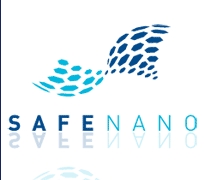Home > Press > SAFENANO team complete BSI British Standards guide to safe handling of nanomaterials
 |
Abstract:
The British Standards Institute today published the first publicly available extensive guide to safe handling of nanomaterials. PD 6699-2:2007 Nanotechnologies - Part 2: Guide to safe handling and disposal of manufactured nanomaterials provides step-by-step guidance through the general approach to management of risks, information needs, hazard assessment, measurement of exposure, methods of control and disposal. It is intended to help manufacturers and users work with nanomaterials in a safe and responsible way.
SAFENANO team complete BSI British Standards guide to safe handling of nanomaterials
UK | Posted on January 19th, 2008The guide was drafted by the SAFENANO team and approved by BSI Committee NTI/1, Nanotechnologies.
SAFENANO Director Rob Aitken, who led the team appointed to draft the guide said "Publication of this guide provides an important step forward in the information available to manufacturers and users of nanomaterials. It is intended to be a pragmatic document which provides users with a practical way to deal with nanomaterial risk issues".
The guide provides an innovative approach to hazard classification and suggests benchmark exposure levels for four classes of nanomaterials and an encouragement to collect exposure information. The benchmark levels are intended to provide reasonably cautions levels, but should not be considered as rigorously developed Workplace Exposure Limits. Control approaches for various scenarios such as deliberate aerosolization and transferring/mixing of dry materials, again with the encouragement that these are supported by measurement.
"Given the current state of knowledge about nanoparticle toxicology and risk it will be some time before formal workplace exposure limits can be developed. Our view is that this guide, and the benchmark levels suggested provides the best basis for progress at this stage." said Aitken.
‘If you are developing, producing, handling, or otherwise working with engineered nanomaterials, READ THIS GUIDE!' said Andrew Maynard, Chief Scientific Advisor to the Woodrow Wilson International Center for Scholars' Project on Emerging Nanotechnologies in in his review of the guide . ‘Its value lies in down-to-earth know-how. This is a shop-floor manual for making decisions where the rubber hits the road.' For the rest of Andrew's comments, please follow this link to read his review and blog - Safe nanotechnology in the workplace: A practical guide
The guide is available to download for free from the BSI site - Click here for access.
If you would like to comment on the guide please contribute your thoughts to the BSI Guide thread in the SAFENANO Community.
####
About SAFENANO
The Safenano Initiative is a venture by the Institute of Occupational Medicine ( IOM ). The initiative was designed to help industrial and academic communities to quantify and control the risks to their workforce, as well as to consumers, the general population collage and the environment, through both information provision and consultancy services.
The Institute of Occupational Medicine is one of the UK's foremost promoters of responsible nanotechnology development, and possesses extensive experience concerning the potential risks from particles and fibres. A combination of this expertise and state-of-art techniques allows the IOM to extend current knowledge and facilitate comparisons between existing substances and new nanoparticles.
For more information, please click here
Copyright © SAFENANO
If you have a comment, please Contact us.Issuers of news releases, not 7th Wave, Inc. or Nanotechnology Now, are solely responsible for the accuracy of the content.
| Related News Press |
News and information
![]() Simulating magnetization in a Heisenberg quantum spin chain April 5th, 2024
Simulating magnetization in a Heisenberg quantum spin chain April 5th, 2024
![]() NRL charters Navy’s quantum inertial navigation path to reduce drift April 5th, 2024
NRL charters Navy’s quantum inertial navigation path to reduce drift April 5th, 2024
![]() Discovery points path to flash-like memory for storing qubits: Rice find could hasten development of nonvolatile quantum memory April 5th, 2024
Discovery points path to flash-like memory for storing qubits: Rice find could hasten development of nonvolatile quantum memory April 5th, 2024
Govt.-Legislation/Regulation/Funding/Policy
![]() NRL charters Navy’s quantum inertial navigation path to reduce drift April 5th, 2024
NRL charters Navy’s quantum inertial navigation path to reduce drift April 5th, 2024
![]() Discovery points path to flash-like memory for storing qubits: Rice find could hasten development of nonvolatile quantum memory April 5th, 2024
Discovery points path to flash-like memory for storing qubits: Rice find could hasten development of nonvolatile quantum memory April 5th, 2024
![]() Chemical reactions can scramble quantum information as well as black holes April 5th, 2024
Chemical reactions can scramble quantum information as well as black holes April 5th, 2024
Announcements
![]() NRL charters Navy’s quantum inertial navigation path to reduce drift April 5th, 2024
NRL charters Navy’s quantum inertial navigation path to reduce drift April 5th, 2024
![]() Discovery points path to flash-like memory for storing qubits: Rice find could hasten development of nonvolatile quantum memory April 5th, 2024
Discovery points path to flash-like memory for storing qubits: Rice find could hasten development of nonvolatile quantum memory April 5th, 2024
Safety-Nanoparticles/Risk management
![]() Tests find no free-standing nanotubes released from tire tread wear September 8th, 2023
Tests find no free-standing nanotubes released from tire tread wear September 8th, 2023
![]() Billions of nanoplastics released when microwaving baby food containers: Exposure to plastic particles kills up to 75% of cultured kidney cells July 21st, 2023
Billions of nanoplastics released when microwaving baby food containers: Exposure to plastic particles kills up to 75% of cultured kidney cells July 21st, 2023
|
|
||
|
|
||
| The latest news from around the world, FREE | ||
|
|
||
|
|
||
| Premium Products | ||
|
|
||
|
Only the news you want to read!
Learn More |
||
|
|
||
|
Full-service, expert consulting
Learn More |
||
|
|
||








